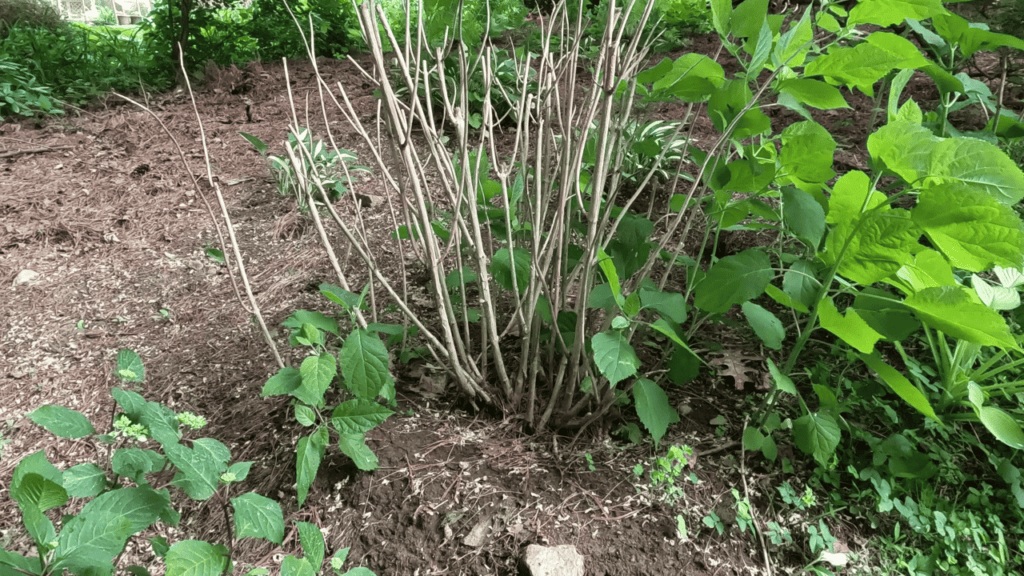Is your hydrangea looking dead? How can you tell for sure? If you are new to caring for hydrangeas, you might have a hard time identifying if your hydrangea is dead or it’s dormant.
I remember my first time growing hydrangeas, I was shocked that the branches look so bare and dead during winter and fall!
Your hydrangea may seem dead but it is just dormant. Observing the signs can save your hydrangea from being prematurely uprooted.
Let’s walk through how to differentiate between a dead and a dormant hydrangea and how to revive wilted hydrangeas.
Check out the video below or keep on reading the article!
Reasons Why Hydrangeas Die
Hydrangeas are generally hardy plants and really difficult to kill. But like any plant, if grown in the wrong condition, it will die. Here are some common reasons why hydrangeas die:

1. Not Enough Water
One of the most common causes of death for hydrangeas is underwatering. Underwatering will result in your hydrangeas drying out and eventually dying.
This is especially true if your hydrangea is planted in a sunny location and you don’t give it enough water, you will start to see it look wilted, the leaves will turn brown and crisp and it will eventually die!
However, don’t worry though. Do know that you can try to save wilted hydrangeas. If detected early enough, a good soaking will usually do the trick and cause your hydrangeas to bounce back!
If your hydrangea is planted in a container and it looks wilted. Make sure it’s not in a sunny location and soak the container in water to hydrate it. If that doesn’t seem to work, I suggest repotting your hydrangea to a larger pot with fresh organic potting mix- the fresh soil should revive your hydrangea!
2. Too Much Water
Overwatering can kill your hydrangeas. Like most plants, if you overwater your hydrangea it will cause root rot which can kill your hydrangeas.
3. Over Pruning
Hydrangeas can die if you over prune it. Hydrangea flower buds for the following year are in the old wood, if you over prune your hydrangea you are essentially cutting off the flower buds. If you keep over pruning your hydrangea, it will eventually die.
I’ve over pruned my hydrangea once- pruned it way down to the ground one year. It still survived but my hydrangea did not flower the following year. So know that over pruning can cause death but you will have to over prune your hydrangea for several years in order to kill it.
4. Too Hot
Hydrangeas planted in a full sun location and not watered enough will eventually die. It’s not an immediate death so there is still time to save your hydrangea.
I have a hydrangea in full sun location. Whenever I go for an extended vacation or get too busy to water it, it starts to wilt and the leaves turn brown. However, I’ve always been able to revive it every year with a thorough soaking.
Hydrangeas are pretty resilient and difficult to kill!
5. Lack of Water After Transplanting Hydrangeas
One of the reasons why hydrangeas die is if you don’t give them enough water after transplanting your hydrangea.
It’s common for newly transplanted hydrangeas to die due to lack of water.
Water your newly transplanted hydrangea every other day during the first week and then eventually decrease watering frequency to 3x a week. Once the roots have grown and your hydrangea becomes established you can decrease watering to 1x a week.
It’s important to keep up with watering your hydrangeas after transplanting.
6. Animals can Kill Hydrangeas
Garden critters and animals can kill your hydrangeas. For example, I have a groundhog in my garden that killed my hydrangea. The groundhog dug a tunnel under my hydrangea. He tore through the hydrangea roots and killed it!
If you get deer in your backyard, they might eat your hydrangeas and kill it! For me, the deer that visits my backyard ignores my hydrangeas so this has never been an issue but I’ve heard of some people having trouble with deer.
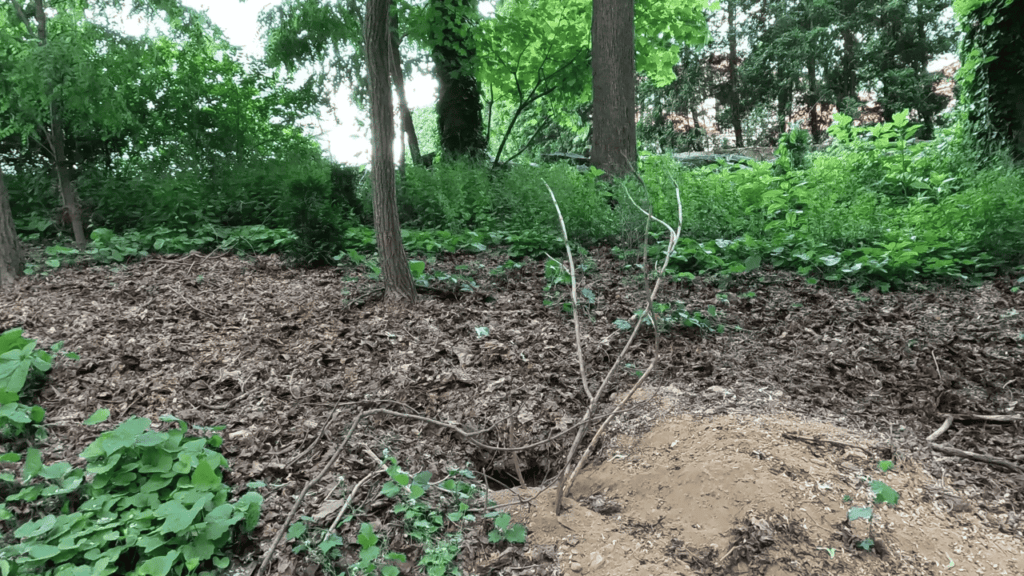
Signs That Your Hydrangea is Dead
How can you tell if your hydrangea is dead? Here are a few key signs to look for:
1. Brittle Stems and Brown Leaves
One of the most obvious signs of a dead hydrangea is brittle, brown stems that snap easily when bent. Plus if you see that the leaves have turned brown and dry- that is usually an obvious indicator that your hydrangea is dead.
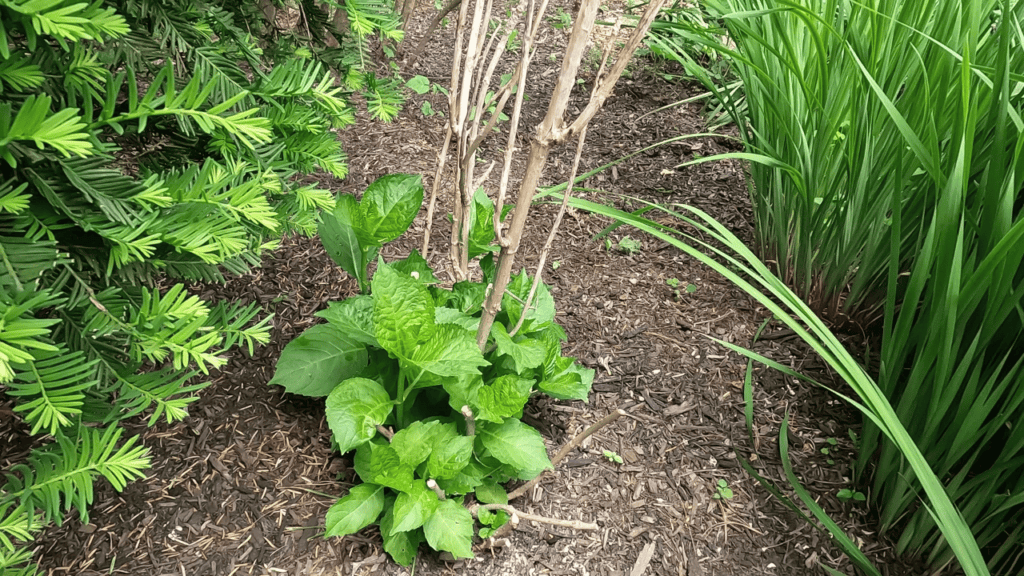
But if you see even a little green leaf sprout growing at the base of the hydrangea, there is hope! Your hydrangea is alive!
If you are not sure, I suggest waiting. Hopefully, you will start seeing little green leaves growing.
Here is an example of a dead hydrangea. I know it’s dead for sure because I have a groundhog in my garden and he dug a hole in the ground under my hydrangea. The groundhog must have torn through the hydrangea’s root system and killed my hydrangea. There is no sign of new growth on the hydrangea branch!
2. No Leaves in the Spring and Summer
If your hydrangea hasn’t grown any leaves, especially in the spring and summer seasons, it may be dead. Healthy hydrangeas will grow new leaves from the base in the spring.
Again, don’t be too quick in declaring that your hydrangea is dead! With global warming and sometimes unpredictable weather fluctuations, I find that my hydrangeas get confused.
One day the weather can be hot like summer then the next day it can be cool like Fall! I think the weather fluctuations can throw your hydrangeas off so just wait and see. Hopefully, you will start to see new leaves growing from the base of your hydrangea.
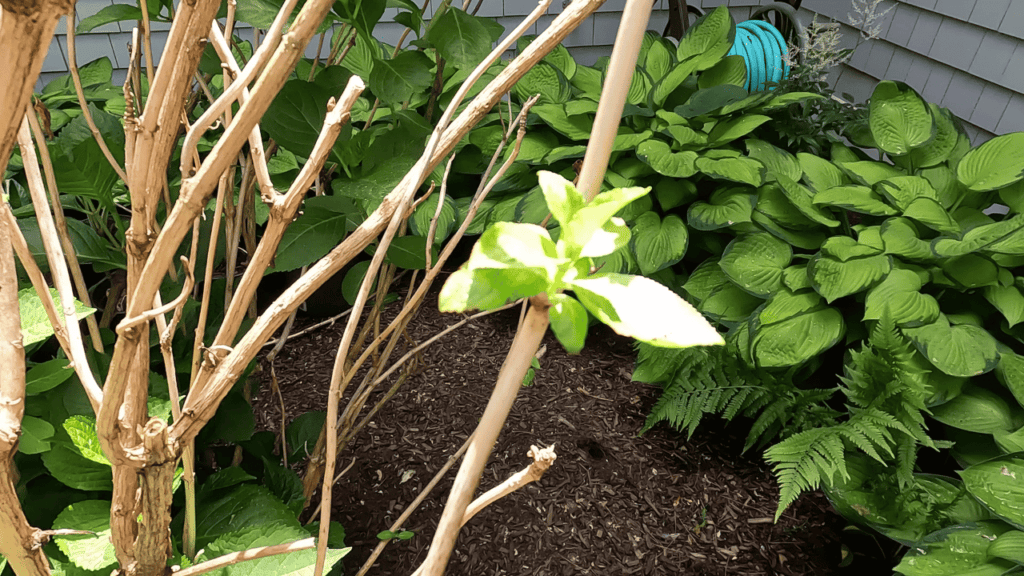
I also find that hydrangeas planted in sunnier locations tend to come out of dormancy earlier. Leaves will sprout earlier on the hydrangeas planted in sunnier locations while the hydrangeas in more shaded locations will grow their leaves later. Usually a week or two later.
I also find that different varieties of hydrangeas will come out of dormancy at different times. I find Anabelle hydrangeas will grow leaves much earlier than the big leaf hydrangeas.
3. Looks Wilted even After Thorough Watering
If your hydrangea looks wilted and you gave it a thorough soaking but it still showing no signs of improvement, it’s likely your hydrangea has died.
However, give it a few days even a week or two of watering your hydrangea to see if it will hopefully bounce back!
Sadly, if your hydrangea is truly dead, it might be time to remove the dead hydrangea and plant a new one!
Signs Your Hydrangea is Dormant but Alive
Sometimes, what seems like a dead hydrangea is just a dormant one. Here’s how to tell:
1. Hydrangea has Buds
Look closely at your hydrangea stems, if you see little buds that is a sign that your hydrangea is alive. These buds will eventually sprout little leaves which is an obvious sign it is just dormant but alive.
Be patient and give your hydrangea time to sprout new leaves!
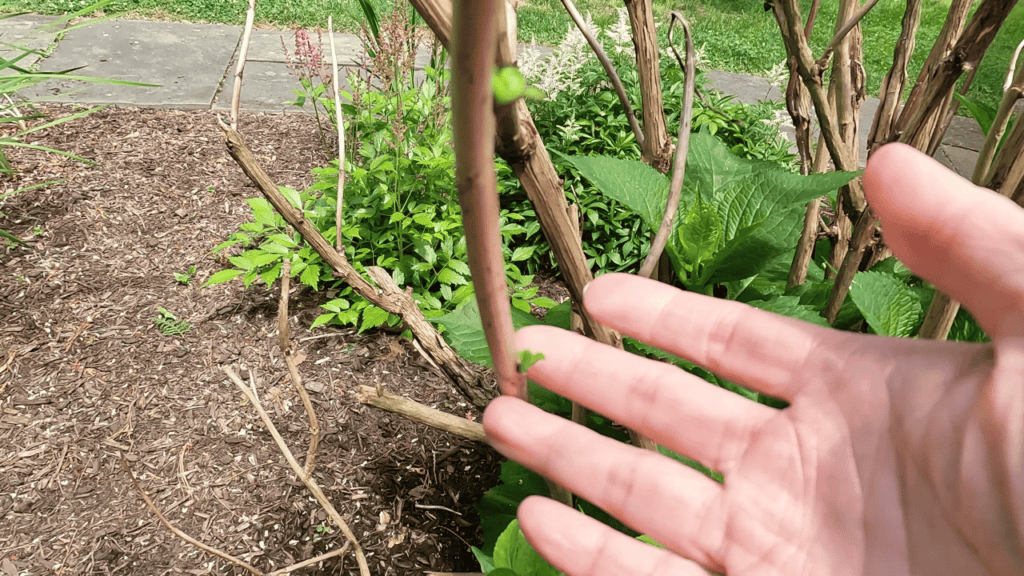
2. Flexible Stems
It’s hard to tell if your hydrangea is dead or alive by just looking at the stem itself. Trying snapping the hydrangea stems, dead hydrangea stems are brittle and will snap easily!
Dormant hydrangeas are flexible stems that don’t snap when bent. They may be brownish-gray and look dry, but if they’re bendable, your hydrangea is dormant.
Wait for the leaves to sprout, you should start seeing the first signs of life with little leaves growing at the base of the hydrangea.
How to Revive Wilted Hydrangeas
If your hydrangea is wilted but not dead, there are steps you can take to revive it:
1. Water Your Hydrangea
One of the main reasons for wilted hydrangeas is the lack of water. Fortunately, it’s easy to revive wilted hydrangeas. Just give it a thorough soaking and the leaves should bounce back later in the day or the next day.
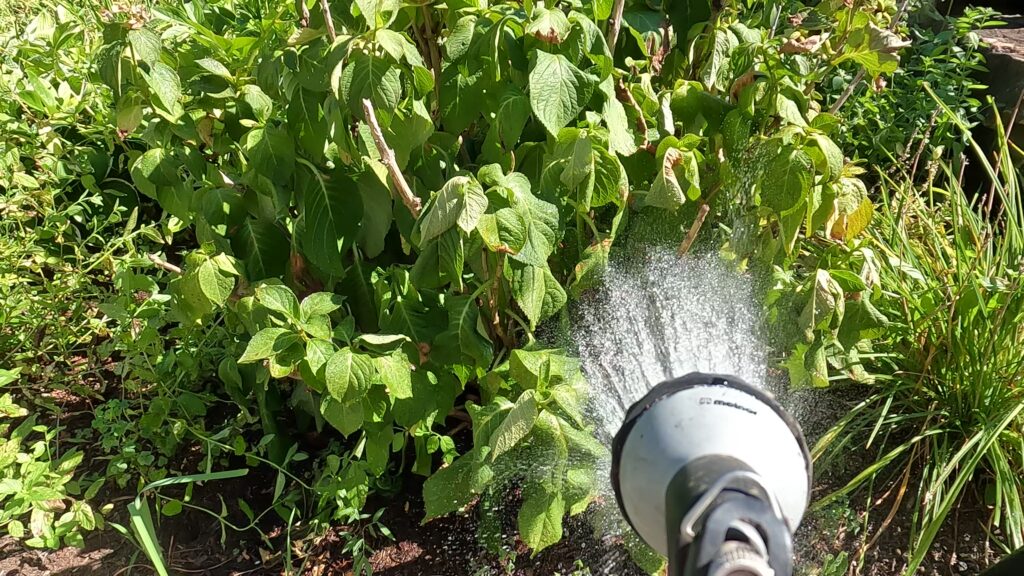
2. Overwatering
Wilted hydrangeas can also be caused by overwatering. It’s not as common but when you see droopy, wilted leaves on your hydrangea it can also be because it’s been overwatered.
Feel the soil, if it’s wet and soggy and if you know you have overwatered it, then stop watering it and let the soil dry out.
Overwatered hydrangea in a heavily shaded location can benefit from transplanting. It may take too long for the soil to dry out if your hydrangea is planted in a heavily shaded location.
Transplant your hydrangea to a different location with fresh organic soil. It can help revive your overwatered hydrangea.
However, do know that when your hydrangea has root rot it can be too late to save it. How can you tell if your hydrangea has root root?
The root smells rotten and it looks mushy. In that case, I’d start with a new hydrangea instead of trying to save the almost-dead hydrangea with root rot! The chances of survival with root rot are low.
3. Too Sunny and Hot
One of the reasons why hydrangea looks wilted is it’s in a location that is too sunny and hot and you haven’t been giving it enough water. Giving it a good soaking will revive your hydrangea.
If you are too busy and don’t have time to give your hydrangea enough water, then I suggest you move your hydrangea to a less sunny location. Or else set up an automatic sprinkler so it gets the right amount of water.
Given enough water, hydrangeas planted in sunny locations will grow well. In fact, hydrangeas planted in sunny locations will produce more flowers than if it was planted in a shaded location!
Hydrangeas are resilient plants, it can bounce back from a wilted state. Know the signs of a dead vs. dormant hydrangea! Be patient, give your hydrangea time to sprout! Happy gardening!
You May Also be Interested in these Hydrangea Care Tips
Step by Step: How to Easily Propagate Hydrangeas (video)
How to Deadhead Hydrangeas (video)
How to Make Hydrangeas Flower (video)
Beginner’s Guide: How to Care for your Hydrangea (video)

